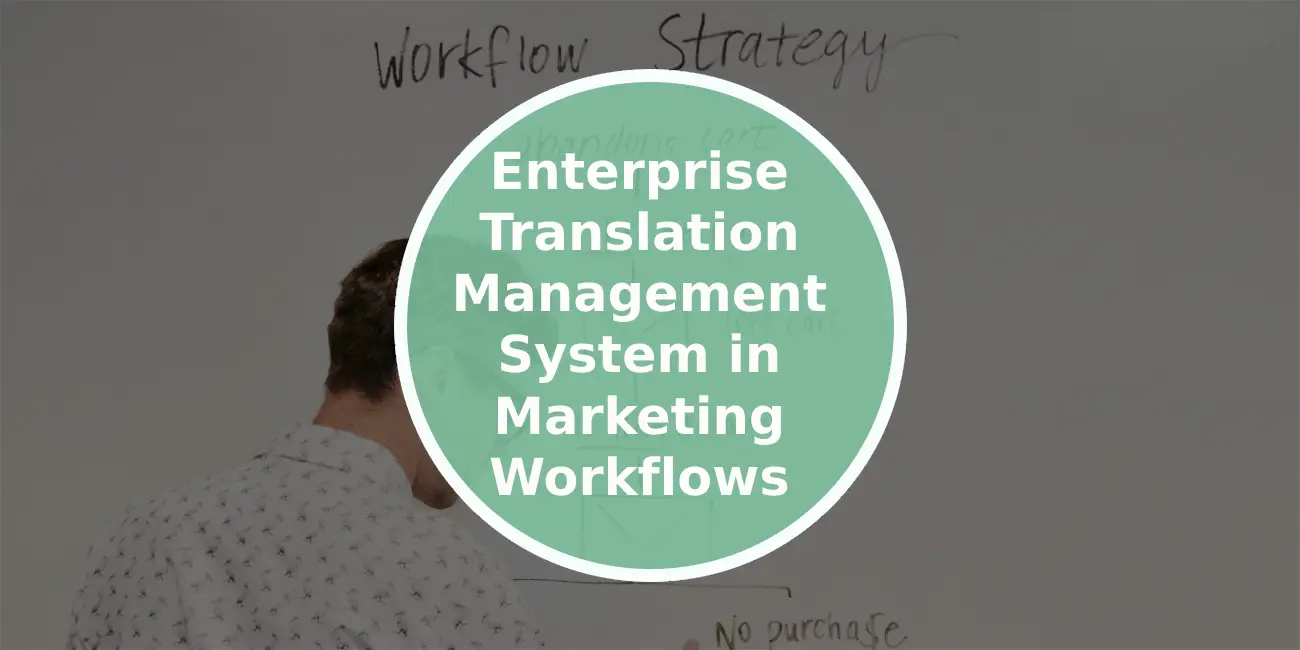In today’s global market, the skill to break through language barriers is essential, not just a bonus. Of the 4.72 billion people online globally, only 25.9% speak English, with just 313 million residing in the U.S.
Companies aiming to grow their presence and engage with customers across different regions must recognize the vital role of translation in marketing. Yet, embedding a corporate translation management system into existing marketing operations poses unique hurdles.
This guide offers six strategic tips for overcoming these obstacles, ensuring a streamlined integration that boosts your marketing activities without upsetting your current setup.

Assess Your Existing Marketing Framework
Start by examining your current marketing framework before introducing an enterprise translation management system. Grasp the details of your existing operations, from how you create content to how you distribute it. This review helps identify how a new system could augment your operations, highlighting areas where integration might be smooth and where it might need more focus.
The aim is to enhance and lift your marketing efforts by overcoming language barriers, not to overhaul your existing processes. Understand the nuances of your current strategies to seamlessly integrate the translation management system without disrupting workflow. By leveraging the strengths of both your existing framework and the new system, you can optimize efficiency and effectiveness in reaching diverse audiences.
Set Precise Goals and Needs
A successful system integration starts with clear goals and needs. What are you looking to achieve by adopting a translation management system? Whether it’s quicker market entry, consistent branding across languages, or better operational efficiency, having specific objectives allows you to filter for systems that match your marketing goals.
This step requires looking ahead and making sure your chosen system advances your marketing strategy correctly, fulfilling both present and future goals. By setting precise goals and needs, you pave the way for a seamless integration process, ensuring that your investment delivers tangible results for your business.
Choose a System That Grows With You
In the dynamic field of marketing, what works today may not suffice tomorrow. Choosing a translation management system that meets your current demands and can grow with your company is crucial. A flexible system, offering a wide range of languages, customizable workflows, and integration capabilities, ensures that as your marketing strategies expand, your communication capabilities do as well.
This foresight avoids the need for future replacements, saving costs over time. Selecting a scalable solution not only accommodates your immediate needs but also anticipates future developments, safeguarding against obsolescence. By investing in a versatile platform, you empower your team to adapt swiftly to evolving market trends and global demands, fostering sustained growth and competitiveness.
Guarantee Compatibility with Current Tools
Integrating a new system without disrupting your existing tools is a major challenge. Your new translation management system should complement, not complicate, your current set of tools, from content management systems to CRM platforms.
Using APIs and integration technologies can streamline this process, creating a unified system where information seamlessly moves across platforms. This compatibility is essential for maintaining operational efficiency, allowing your marketing team to concentrate on creating impactful content.
Emphasize Easy Use and Strong Support
The core of any marketing operation is its people. A translation management system’s effectiveness largely depends on how easily your team can use it. Selecting a system with a straightforward interface ensures that your marketing staff can manage translation tasks efficiently, regardless of their tech skills.
Furthermore, robust support and training are vital for a smooth transition and effective use. A well-supported system reduces transition challenges and enables your team to utilize the system’s full potential, promoting ongoing learning and enhancement.
Implement Ongoing Enhancement Measures
Adding a translation management system to your marketing operations is just the beginning; continuous improvement is key. Setting up processes for feedback collection and analysis from your team helps tailor the system more closely to your needs. Additionally, using analytics and reporting features to monitor the system’s effect on your marketing results offers a basis for refining your translation strategies.
This dedication to ongoing enhancement ensures that your translation management system continues to be an adaptable and effective tool in your marketing toolkit, ready to meet new challenges and opportunities.

Navigating the Global Market: Success with Corporate Translation Integration
Implementing a corporate translation management system into your marketing operations is a strategic endeavor that demands thoughtful planning. By assessing your current setup, establishing clear objectives, selecting an adaptable system, ensuring tool compatibility, focusing on usability, and aiming for continuous enhancement, you can effectively manage this integration.
This strategy not only improves your marketing efforts but also prepares your business to succeed in the international arena, reaching audiences more effectively and efficiently.

